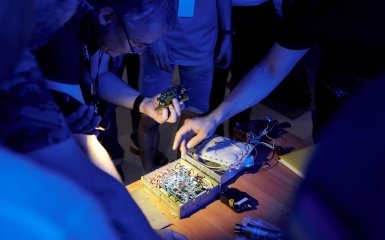The director of the "New Ukraine" project at the Institute of Progressive Politics, Tamara Jacoby, draws attention to the fact that during the 2.5 years of war, drones have radically changed the combat operations in Ukraine, but this is only the beginning, because artificial intelligence is entering the arena.
Points of attention
- Developing software for AI-powered drones requires sophisticated technologies capable of solving tasks on the battlefield.
- Despite the superiority of Ukrainian defenders in the use of AI, the enemy has greater resources and more powerful electronics.
Artificial intelligence and its impact on war
According to Tamara Jacobi, there are two key tasks that an AI drone should be able to perform on its own.
First of all, it is about navigation. It is extremely important to develop software for a miniature flight controller on board the drone, which will know the intended route and be able to recognize the terrain below, directing the device to the target without the help of GPS or other means.
As for the second task, it is said that it is necessary to teach the AI to recognize targets and drop an explosive charge without a signal from the pilot on the ground.
What is important to understand is that there is a startup DroneControl in Ukraine — one of the few that is actively working on solving these problems.
What are the current problems?
According to Dmytro Saltovets, the manager of the DroneControl company, our enemy currently has several advantages in this direction.
The fact that the aggressor country has more money cannot be denied. Moreover, it has more powerful electronics.
Larger drones are manufactured in Russia, produced in large quantities at state-owned factories — as part of the Russian military-industrial complex.
Despite this, Ukrainian defenders are already using rudimentary AI to help pilots target nearby targets.
For example, this is done by the "Heavenly Punishment" unit of the 54th OMBr of the ZSU, on the outskirts of Sloviansk.




